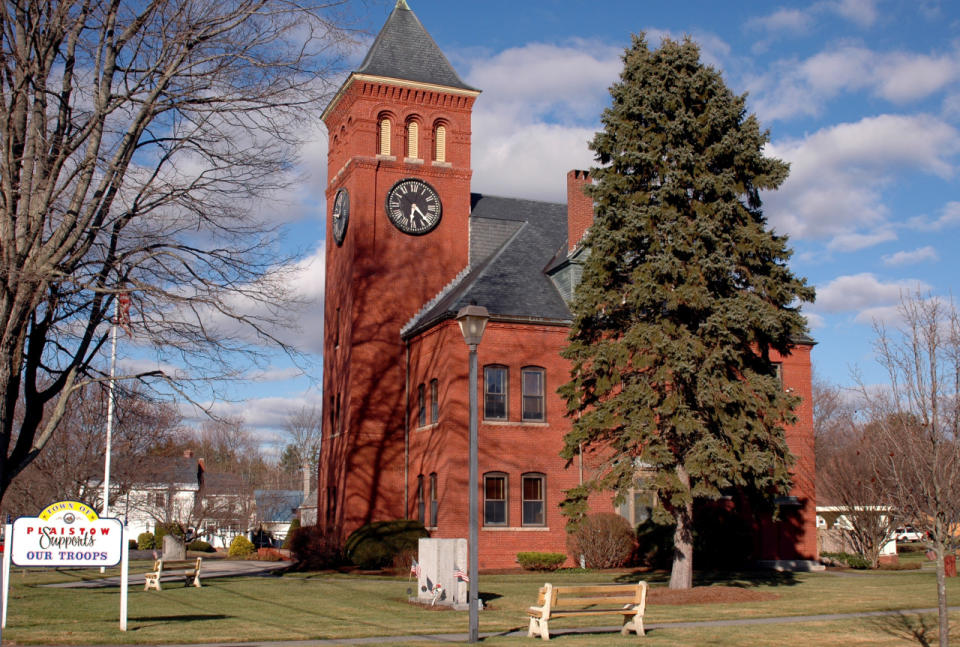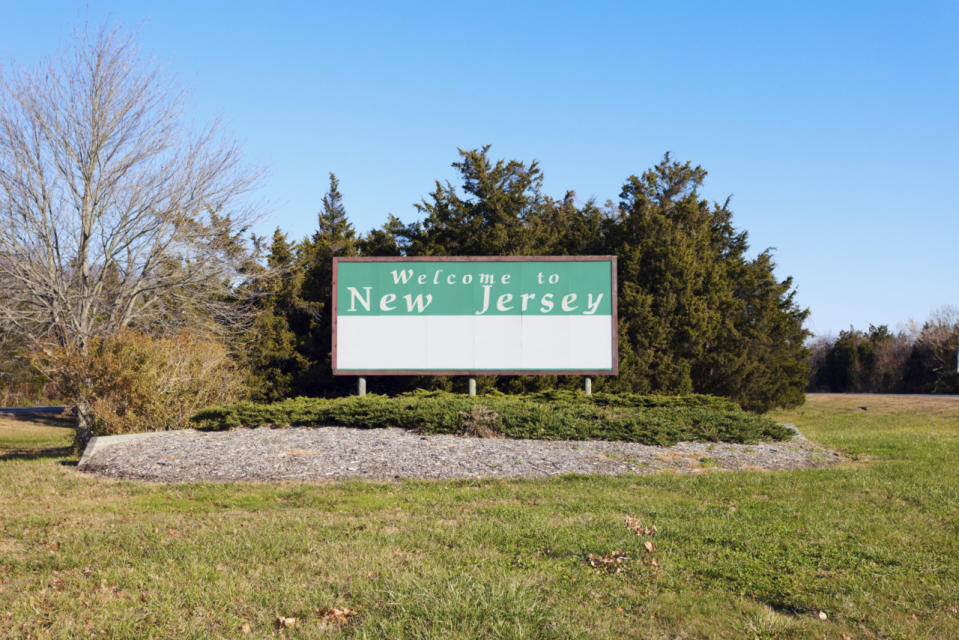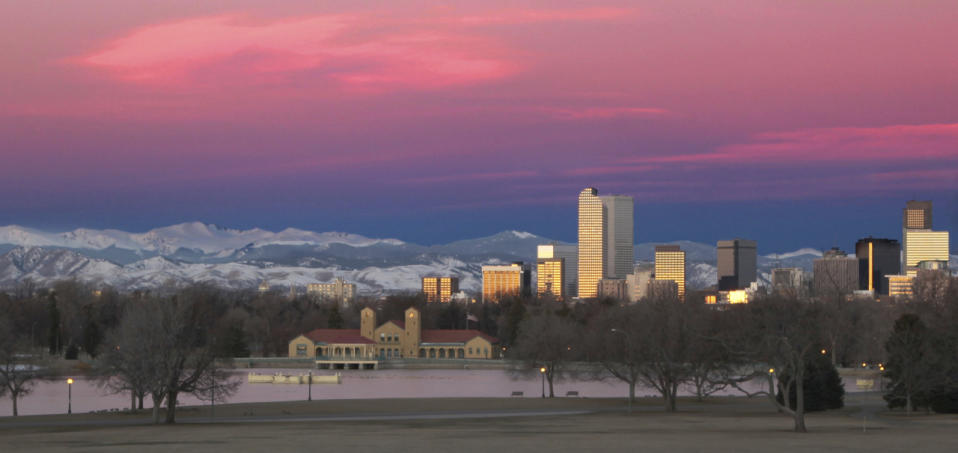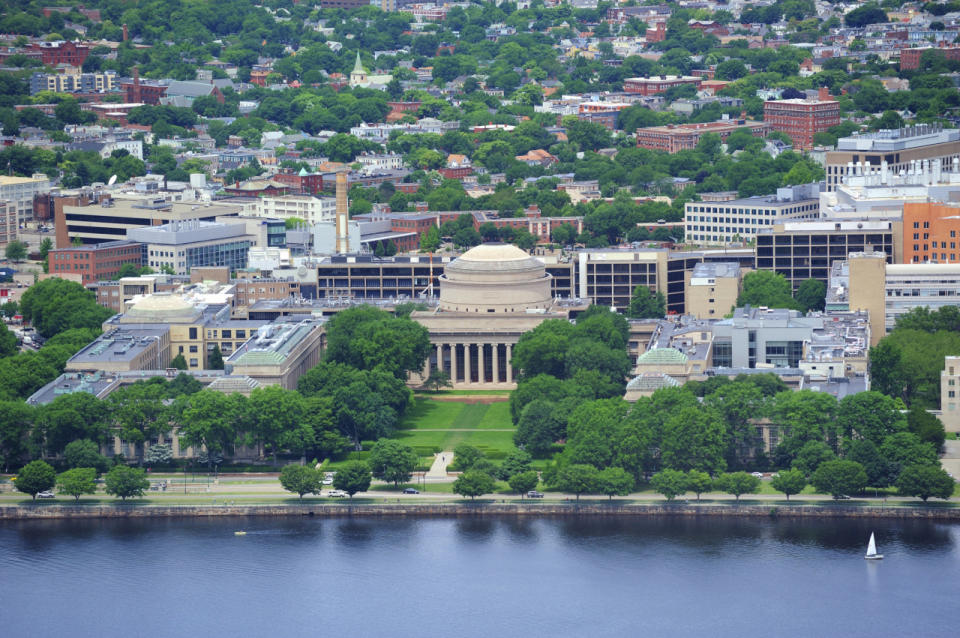The Most Educated States in America

The United States offers some of the most expensive college educations in the world, and costs have risen to record highs. The College Board found that in the most recent academic year, higher education costs once again increased faster than the rate of inflation. Despite the rising costs, however, college enrollment has been increasing for decades in the United States. Over the 10 years through 2012, university attendance increased by 24%. And as of last year, more than 30% of American adults had a college education, up from the previous year.
Based on recently released educational attainment data from the U.S. Census Bureau, 24/7 Wall St. analyzed each state population’s level of higher education. Massachusetts again led the nation this year, with 41.2% of adults having attained at least a bachelor’s degree as of 2014. West Virginia, also unchanged from 2013, trailed every other state, with less than 20% of state adults reporting at least a college degree.
Yahoo Real Estate is publishing the 10 most educated states in America here. Visit 247WallSt.com to see the full 50-state ranking for education.
States with relatively high percentages of adults with a bachelor’s degree are almost always relatively wealthy states. Of the 15 states with the highest college attainment rates, only Kansas had a median household income that did not exceed the national median income of $53,657. On the other end of the spectrum, all of the 15 states with the lowest education levels except for Wyoming reported a lower median income than the national median.
Sterling Lloyd, senior researcher with national education newspaper Education Week, agreed this is not especially surprising. Not only do college-educated adults frequently have the skills necessary to obtain higher-paying jobs, but also, companies tend to operate in areas where the workforce has suitable skills.
The strongest improvements in college attainment rates from 2013 were mostly in states that already had relatively high attainment rates. However, no state reported a change of more than 1.5 percentage points, and improvements were even more scarce among less educated states.
A healthy economic environment is not just the consequence of a good education, Lloyd explained, but also often a precursor. In fact, the substantial resources necessary to attend college means residents of relatively wealthy states are more likely to attend college in the first place than residents of less wealthy states. As Lloyd said, “That’s why we see these disparities in education being so stubborn over time: It’s hard to move the needle.”
While the precise relationship between high funding levels and high educational achievement is very controversial among researchers, the most educated states tended to spend more on public education per student. Only five of the 15 most educated states reported a lower school spending per pupil in 2013 than the national average expenditure of $10,700 per pupil. Among the 15 least educated states, only three reported higher educational expenditures than the national average figure.
“I think most people would agree that if there is not enough funding there, it makes it harder for educators to have the resources that they need to serve students and to boost achievement. But it’s hard to decipher from the research exactly what the appropriate funding level is,” Lloyd explained.
To identify the level of college achievement in each of the 50 states, 24/7 Wall St. reviewed the percentage of adults in each state who had completed at least a bachelor’s degree from the U.S. Census Bureau’s 2014 American Community Survey (ACS). The median household income, high school attainment rate, poverty rate, the percentage of households relying on food stamps, as well as average earnings by education level also came from the ACS. We reviewed these data for both 2014 and 2013. School spending figures, which do not include private education spending, are as of the end of 2013 and came from the U.S. Census Bureau’s Survey of School System Finances.
These are the most educated states.

10. Minnesota
> Pct. of adults with at least a bachelor’s degree: 34.3%
> Pct. of adults with at least a high school diploma: 92.6%
> 2014 median household income: $61,481 (10th highest)
> Median earnings for bachelor degree holders: $51,226 (10th highest)
Like in just nine other states, more than one-third of adults in Minnesota had at least a bachelor’s degree. States with high proportions of college-educated adults almost always also had similarly strong high school attainment rates. In Minnesota, 92.6% of adults had at least a high school diploma, the second highest rate nationwide after only Alaska. Highly educated populations also tend to report higher incomes. A typical household in Minnesota earned $61,481 last year, one of the highest median incomes in the nation. A better-educated workforce is also more likely to find work than one with more unskilled workers. Perhaps as a result, Minnesota’s unemployment rate of 4.1% in 2014 was the fifth lowest in the country.

9. New York
> Pct. of adults with at least a bachelor’s degree: 34.5%
> Pct. of adults with at least a high school diploma: 85.7%
> 2014 median household income: $58,878 (16th highest)
> Median earnings for bachelor degree holders: $53,280 (16th highest)
New York spends more money on education per student than any other state. Public school funding reached nearly $20,000 per pupil in 2013. In contrast, the national average spending per pupil in 2013 was just $10,700. High-paying jobs often require high levels of education. In New York, which had the ninth highest college attainment rate, 11.5% of workers were employed in traditionally high-paying professional, scientific jobs, also one of the highest such shares. States with high proportions of college-educated adults also often had similarly strong high school attainment rates, although this was not always the case. While New York had one of the highest college attainment rates, just 85.7% of adults had at least a high school diploma, one of the lowest rates in the country.
ALSO READ: States With the Widest Gap Between Rich and Poor

8. Vermont
> Pct. of adults with at least a bachelor’s degree: 34.9%
> Pct. of adults with at least a high school diploma: 92.0%
> 2014 median household income: $54,166 (20th highest)
> Median earnings for bachelor degree holders: $42,228 (20th highest)
States with high proportions of college-educated adults almost always also had similarly strong high school attainment rates. In Vermont, nearly 35% of adults had at least a bachelor’s degree and 92.0% had at least a high school diploma, each the eighth highest rate nationwide. A better-educated workforce is more likely to find work than one with less-skilled workers. This may have been the case in Vermont, where the unemployment rate of 4.1% was the fifth lowest in the country in 2014. Vermont invested heavily in its public education system. The Green Mountain State spent $16,377 per pupil on education in 2013, a higher expenditure than in all but four other states.

7. New Hampshire
> Pct. of adults with at least a bachelor’s degree: 35.0%
> Pct. of adults with at least a high school diploma: 92.2%
> 2014 median household income: $66,532 (7th highest)
> Median earnings for bachelor degree holders: $51,965 (7th highest)
In New Hampshire, which had one of the highest college attainment rates, 92.2% of adults had at least a high school diploma, the fifth highest rate in the country. Nationwide, higher college attainment rates are associated with higher income levels – and New Hampshire is no different. A typical household in New Hampshire earned $66,532 last year, one of the highest median incomes in the nation. A better-educated workforce is more likely to find work than one with more unskilled workers. In New Hampshire, the 2014 unemployment rate of 4.3% was the seventh lowest in the country.
ALSO READ: The Best (and Worst) Countries to Grow Old

6. Virginia
> Pct. of adults with at least a bachelor’s degree: 36.7%
> Pct. of adults with at least a high school diploma: 88.5%
> 2014 median household income: $64,902 (8th highest)
> Median earnings for bachelor degree holders: $55,797 (8th highest)
As in most well-educated states, Virginia’s college attainment rate improved slightly from 2013. In 2014, 36.7% of Virginia adults had at least a bachelor’s degree, an improvement of slightly more than half a percentage point from the previous year. Higher levels of education likely led to higher incomes for many state residents. A typical household in Virginia earned $64,902 last year, one of the highest median incomes in the nation. State spending on education is traditionally linked with high educational attainment rates. Though Virginia had the sixth highest collegiate educational attainment rate, it spent just $10,960 per student in 2013, only $260 more than the amount spent on the average American public school student.

5. New Jersey
> Pct. of adults with at least a bachelor’s degree: 37.4%
> Pct. of adults with at least a high school diploma: 89.1%
> 2014 median household income: $71,919 (2nd highest)
> Median earnings for bachelor degree holders: $60,575 (2nd highest)
More than 37% of New Jersey adults had at least a bachelor’s degree last year compared to 30.1% of the nation’s adults. Nationwide, higher college attainment rates are associated with higher income levels because high-paying jobs often require high levels of education. In New Jersey, 13.1% of workers were employed in traditionally high-paying professional scientific jobs, one of the highest such percentages of any state. Partly as a result, New Jersey residents were wealthier than most Americans generally. The typical household earned $71,919, the second highest median income in the country. In particular, residents with advanced degrees were wealthier than their similarly educated peers elsewhere. The average state resident with a graduate or professional degree earned $81,156, the highest such income level in the nation.
ALSO READ: Countries With the Best (and Worst) Jobs

4. Connecticut
> Pct. of adults with at least a bachelor’s degree: 38.0%
> Pct. of adults with at least a high school diploma: 90.1%
> 2014 median household income: $70,048 (4th highest)
> Median earnings for bachelor degree holders: $61,087 (4th highest)
Last year, 38% of Connecticut adults had completed at least a bachelor’s degree, the fourth highest collegiate attainment rate in the country. Connecticut college graduates earned more than $61,000 in 2014, the highest median earnings for college graduates in any state. One in every 10 Connecticut households had an annual income of at least $200,000, the second highest share in the nation. In Connecticut, 11.2% of workers were employed in traditionally high-paying professional scientific jobs, one of the highest such percentages in any state.

3. Maryland
> Pct. of adults with at least a bachelor’s degree: 38.2%
> Pct. of adults with at least a high school diploma: 89.6%
> 2014 median household income: $73,971 (the highest)
> Median earnings for bachelor degree holders: $59,691 (the highest)
More than 38% of Maryland adults had at least a bachelor’s degree last year compared to 30.1% nationally. Higher college attainment rates usually go hand in hand with higher income levels. This was especially the case in Maryland, where the median household income was $73,971 – the highest median income in the country. High paying jobs often require high levels of education. In Maryland, 14.9% of workers were employed in traditionally high-paying professional scientific jobs, the highest share of people employed in such professions.
ALSO READ: The Most Popular Brand in Each State

2. Colorado
> Pct. of adults with at least a bachelor’s degree: 38.3%
> Pct. of adults with at least a high school diploma: 90.5%
> 2014 median household income: $61,303 (12th highest)
> Median earnings for bachelor degree holders: $48,818 (12th highest)
In Colorado, 38.3% of adults had at least a bachelor’s degree, the second highest collegiate attainment rate nationwide. States with high proportions of college-educated adults almost always had similarly strong high school attainment rates. In Colorado, 90.5% of adults had at least a high school diploma, the 14th highest rate nationwide. Higher college attainment rates are associated with higher income levels. This was especially the case in Colorado, where the median household income was $61,303 – the 12th highest in the country.

1. Massachusetts
> Pct. of adults with at least a bachelor’s degree: 41.2%
> Pct. of adults with at least a high school diploma: 89.7%
> 2014 median household income: $69,160 (6th highest)
> Median earnings for bachelor degree holders: $57,451 (6th highest)
Last year, 41.2% of Massachusetts adults had a at least bachelor’s degree, the highest educational attainment rate in the nation. The rate had also increased by nearly a full percentage point from 2013, one of the largest increases compared with other states. In 2013, the state also had the most educated population – more than two in five adults had completed college. While people with higher education generally have higher incomes, this was especially the case in the most educated state. Median earnings for college educated state residents were $57,451 last year, the fourth highest in the country. High education spending may have played a role in the state’s high collegiate attainment rate. The state spent nearly $14,500 per pupil in 2013, the seventh highest such expenditure compared with other states.
To see the full list of the most and least educated states in America, visit 24/7 Wall St.

